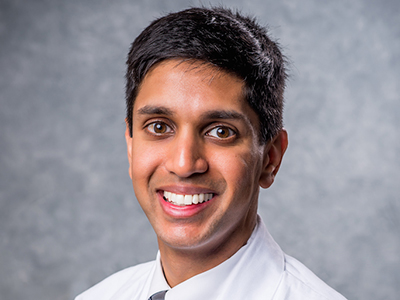 Department of Orthopaedic Surgery Associate Professor and Section Chief of Sports Medicine Amit Momaya, M.D., recently published an editorial commentary in Journal of Arthroscopic and Related Surgery.
Department of Orthopaedic Surgery Associate Professor and Section Chief of Sports Medicine Amit Momaya, M.D., recently published an editorial commentary in Journal of Arthroscopic and Related Surgery.
Momaya’s editorial commentary was “Shoulder Superior Capsule Reconstruction Leads to Good Outcomes Despite Ambiguous Graft Healing Suggesting a Spacer Effect.” He begins by noting that massive, retracted rotator cuff tears with poor tissue quality continue to pose a problem for the shoulder surgeon.
A massive and irreparable rotator cuff tear is a diagnosis that no patient, especially an active patient, wants to receive. Treatment for these tears is complex, and is often debated on what provides the best repair and the best healing for patients.
One treatment option that has been proposed is superior capsule reconstruction (SCR), which utilizes a graft from the superior glenoid to the greater tuberosity to stabilize the humeral head, according to Peter J. Millett, MD, MSc, who profiled the developing procedure in 2016.
Though Momaya notes that there is a place for superior capsule reconstruction (SCR) in repairing massive rotator cuff tears, the field of orthopaedics still needs higher-level studies to gain an improved understanding of the clinical utility of using SCRs..
Recently, Momaya and other UAB Orthopaedic Surgeons announced the offering of a new procedure that has the ability to bring relief for patients with a massive rotator cuff tear previously deemed irreparable: the subacromial balloon spacer technique.
Before performing the procedure at UAB, Momaya, Casp and Brabston led a systematic review of the procedure across the United States. The team has successfully performed the procedure for several patients with positive outcomes.
But, Momaya notes that massive rotator cuff tears are still an incredibly complex undertaking, and even more innovative treatment options may be on the horizon.
“Even though we are on the cutting-edge of new techniques to treat massive rotator cuff tears, our team of researchers and clinicians is going to continue to collaborate to find even less invasive procedures with shorter recovery and greater healing opportunity for our patients,” said Momaya. “Our goal is to get them back to doing what they love.”